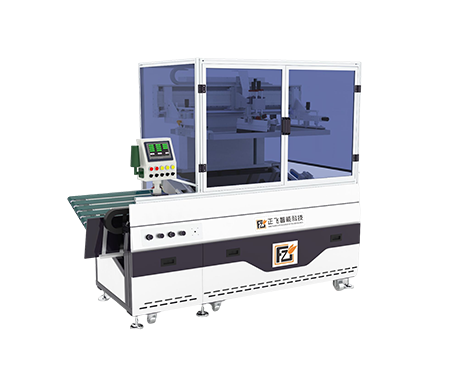When using a fully automatic sheet screen printing machine for printing, the selection of ink is of vital importance. Appropriate ink can ensure printing quality and enhance production efficiency; conversely, it may lead to poor printing results, production interruptions and other issues. The selection of ink for a fully automatic screen printing machine for sheet materials requires comprehensive consideration of multiple aspects.
First of all, the material of the sheet is an important basis for choosing ink. Sheet materials of different materials have different surface characteristics and chemical properties, and their adaptability to ink also varies. For instance, when it comes to plastic sheet materials, if non-plastics such as polyethylene and polypropylene are used, ordinary inks are difficult to adhere. Therefore, inks with special formulas that have good adhesion to non-materials need to be selected. For plastics such as polyvinyl chloride, the range of available inks is relatively wide. However, it is also necessary to pay attention to the compatibility between the ink and the plastic to avoid chemical reactions that may cause deformation of the sheet or ink peeling. For metal sheets, the anti-corrosion and wear resistance of the ink should be taken into account, and specialized metal inks should be selected to ensure that the printed patterns remain clear and intact on the metal surface for a long time.

Secondly, the requirements for printing effect determine the type of ink. If a high-gloss printing effect is required, glossy ink should be chosen. If a matte texture is pursued, matte ink is more suitable. For printing with special effect requirements, such as fluorescent effect, luminous effect, etc., corresponding special function inks should be selected. In addition, the accuracy and vividness of the color are also important considerations. The color performance of inks from different brands and models varies. When conducting color printing, it is necessary to select inks with high color reproduction and accurate hue based on the color requirements of the design draft. At the same time, the mixing characteristics between inks should also be considered to ensure that the printed colors meet expectations.
The drying performance of the ink should not be ignored either. The printing speed of the fully automatic sheet screen printing machine is relatively fast, and it is required that the ink can dry in a short time to ensure the continuity of printing and production efficiency. When choosing ink, it is necessary to understand its drying method and drying time. Common drying methods include natural drying, hot air drying, ultraviolet drying, etc. For instance, in large-scale continuous production, UV-dried ink, due to its fast drying speed, can meet the demands of high-speed printing. For some temperature-sensitive sheet materials, inks that are naturally dried or dried with low-temperature hot air are more suitable to prevent the sheet materials from deforming due to high temperatures.
In addition, the usage environment and environmental protection requirements also affect the selection of ink. In some odor-sensitive environments, such as food packaging printing, it is necessary to choose low-odor, non-toxic and harmless environmentally friendly inks to ensure that the products meet relevant safety standards. At the same time, different regions and industries have different environmental protection regulations for inks. When choosing inks, it is necessary to strictly abide by these regulations to avoid products being unsalable or facing penalties due to non-compliant inks.